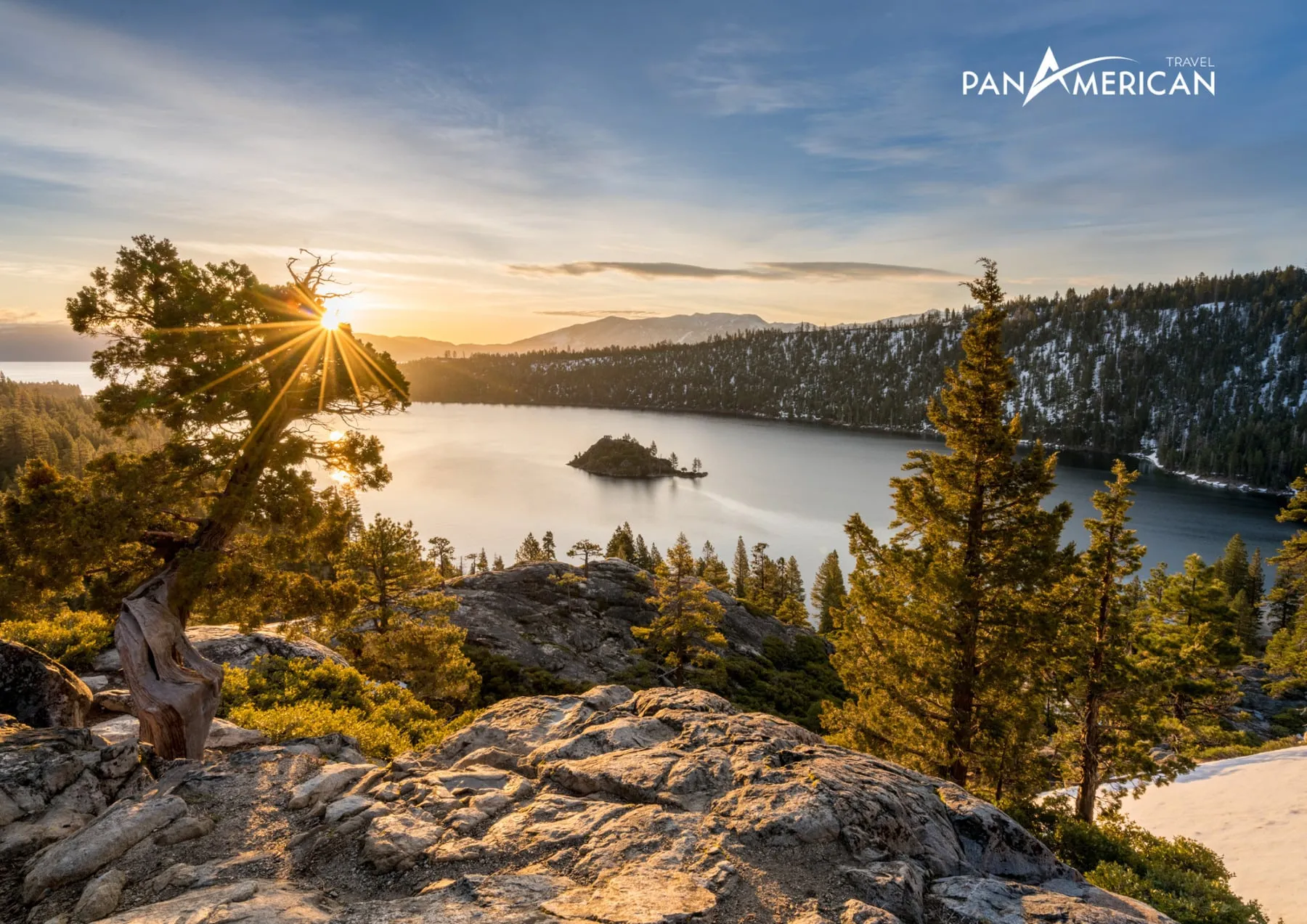Nevada, renowned for the dazzling Las Vegas, also harbors breathtaking natural treasures, especially in its ecotourism destinations. This article shares insights into experiencing ecotourism in Nevada, helping you uncover the untouched beauty and immerse yourself in the state’s magnificent nature.
Often associated with vast deserts and vibrant entertainment cities, Nevada surprisingly boasts diverse ecosystems, ranging from towering mountains and crystal-clear lakes to expansive forests. Ecotourism in Nevada offers a remarkable opportunity to explore a different facet of this state—a land rich in natural resources and unique experiences.
Nevada: An Ecotourism Destination with Immense Potential
Nevada is home to numerous national parks, nature preserves, and wilderness areas, fostering a favorable environment for ecotourism development. Visitors to Nevada can engage in activities such as hiking, mountain climbing, camping, kayaking, fishing, wildlife observation, and exploring unique landscapes.
One of Nevada’s most renowned ecotourism destinations is Lake Tahoe. This pristine freshwater lake, nestled in the Sierra Nevada mountains, presents a picture-postcard beauty. Lake Tahoe is not only an ideal place for relaxation but also a haven for those who love adventures amidst majestic nature.
Ideal Times for Your Nevada Ecotourism Trip
The best time for ecotourism in Nevada depends on the region you wish to explore and the activities you plan to undertake.
- Spring and Autumn: These seasons are perfect for exploring national parks and nature preserves in southern Nevada, such as Death Valley and Red Rock Canyon National Conservation Area. The weather is mild and pleasant, ideal for hiking and camping.
- Summer: Summer is a fantastic time to discover Lake Tahoe and high-altitude mountain areas. However, be aware that temperatures can be quite high, especially in desert regions.
- Winter: Winter is ideal for skiing and other winter sports activities in Lake Tahoe and mountain resorts.
Transportation Options for Ecotourism in Nevada
- Airplane: Reno-Tahoe International Airport (RNO) is the closest airport to Lake Tahoe and ecotourism areas in northern Nevada. From the airport, you can rent a car or use shuttle services to reach your desired destinations.
- Car: Renting a car is the most popular option for exploring Nevada, especially if you want the freedom to discover surrounding areas. Major cities like Las Vegas, Reno, and Sacramento have numerous car rental companies.
- Bus: Some bus services operate from neighboring cities to ecotourism areas in Nevada. However, buses may not be the most convenient option if you wish to explore remote locations.
Suggested Ecotourism Itineraries in Nevada
Explore Lake Tahoe
Lake Tahoe, a jewel nestled on the border of California and Nevada, is famous for its clear blue waters and stunning mountain scenery.

- Day 1: Arrive at Lake Tahoe, check into your hotel, and begin exploring the lakeside town. Stroll along the shore, admire the stunning scenery, and enjoy dinner at a local restaurant.
- Day 2: Take a boat tour on the lake to explore hidden coves and beautiful beaches. In the afternoon, hike one of the trails around the lake, such as the Rubicon Trail or Eagle Lake Trail.
- Day 3: Explore Emerald Bay State Park, one of the most popular destinations in Lake Tahoe. Visit Vikingsholm Castle, a unique Scandinavian-style mansion located on the bay’s shore.
Explore Red Rock Canyon Area
Red Rock Canyon National Conservation Area is located about 20 miles west of Las Vegas. It is renowned for its vibrant red sandstone cliffs and breathtaking canyons.
- Day 1: Arrive in Las Vegas, rent a car, and drive to Red Rock Canyon. Check into your hotel and begin exploring the area.
- Day 2: Hike one of the most popular trails in Red Rock Canyon, such as Calico Tanks Trail or Ice Box Canyon Trail. Join a rock climbing or mountain biking tour.
- Day 3: Visit the Red Rock Canyon Visitor Center to learn about the area’s history, geology, and ecology. Watch the sunset over the sandstone cliffs.
Death Valley
Death Valley National Park is located in southeastern California and a small part of Nevada. It is one of the hottest, driest, and lowest places in North America.
- Day 1: Arrive in Las Vegas, rent a car, and drive to Death Valley. Check into your hotel and begin exploring the area.
- Day 2: Visit Zabriskie Point, one of the most famous viewpoints in Death Valley. Explore Badwater Basin, the lowest point in North America.
- Day 3: Hike one of the trails in Death Valley, such as Golden Canyon Trail or Mosaic Canyon Trail. Enjoy stargazing at night.
Important Notes for Ecotourism in Nevada
- Prepare thoroughly: Bring enough water, sunscreen, hats, sunglasses, and weather-appropriate clothing.
- Respect nature: Do not litter, avoid making loud noises, and do not damage the environment.
- Follow regulations: Adhere to the regulations of national parks and nature preserves.
- Safety first: Always be cautious when participating in outdoor activities and follow safety guidelines.
Conclusion
Ecotourism in Nevada offers unique experiences and opportunities to discover the state’s untouched beauty. From the dreamy Lake Tahoe to the majestic Red Rock Canyon and the stark Death Valley, Nevada has something to satisfy nature lovers and adventure seekers alike. Plan your ecotourism trip today and explore the wonders Nevada has to offer!